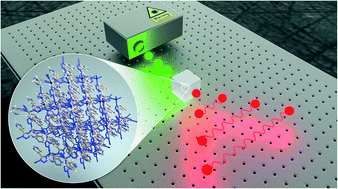Engineering entangled photon pairs with metal–organic frameworks†
Abstract
The discovery and design of new materials with competitive optical frequency conversion efficiencies can accelerate the development of scalable photonic quantum technologies. Metal–organic framework (MOF) crystals without inversion symmetry have shown potential for these applications, given their nonlinear optical properties and the combinatorial number of possibilities for MOF self-assembly. In order to accelerate the discovery of MOF materials for quantum optical technologies, scalable computational assessment tools are needed. We develop a multi-scale methodology to study the wavefunction of entangled photon pairs generated by selected non-centrosymmetric MOF crystals via spontaneous parametric down-conversion (SPDC). Starting from an optimized crystal structure, we predict the shape of the G(2) intensity correlation function for coincidence detection of the entangled pairs, produced under conditions of collinear type-I phase matching. The effective nonlinearities and photon pair correlation times obtained are comparable to those available with inorganic crystal standards. Our work thus provides fundamental insights into the structure–property relationships for entangled photon generation with metal–organic frameworks, paving the way for the automated discovery of molecular materials for optical quantum technology.



 Please wait while we load your content...
Please wait while we load your content...